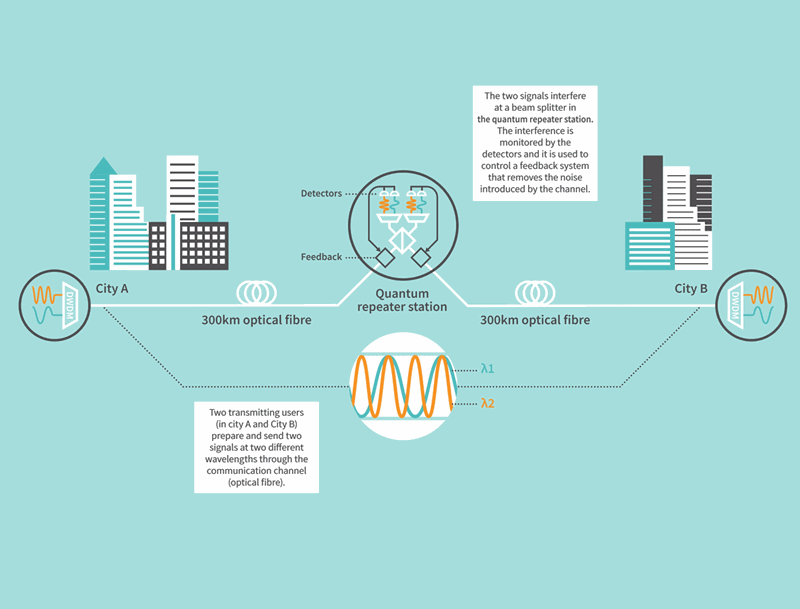
14th June 2021 New record distance for quantum communications Toshiba's Cambridge Research Laboratory has achieved quantum communications over optical fibres exceeding 600 km in length, three times further than the previous world record distance. The breakthrough will enable long distance, quantum-secured information transfer between metropolitan areas and is a major advance towards building a future Quantum Internet. The term "Quantum Internet" describes a global network of quantum computers, connected by long distance quantum communication links. This technology will improve the current Internet by offering several major benefits – such as the ultra-fast solving of complex optimisation problems in the cloud, a more accurate global timing system, and ultra-secure communications. Personal data, medical records, bank details, and other information will be physically impossible to intercept by hackers. Several large government initiatives to build a Quantum Internet have been announced in China, the EU and the USA.
One of the biggest technical challenges in building a Quantum Internet is the problem of how to transmit quantum bits over long optical fibres. Even small changes in ambient conditions, such as temperature fluctuations, cause the fibres to expand and contract, thereby scrambling the fragile qubits, which are encoded as a phase delay of a weak optical pulse in the fibre. Toshiba has now demonstrated a novel "dual band" stabilisation technique. This sends two optical reference signals, at different wavelengths, to minimise the phase fluctuations on long fibres. The first wavelength is used to cancel the rapidly varying fluctuations, while the second wavelength, at the same wavelength as the optical qubits, is used for fine adjustment of the phase. After deploying this dual band technique, Toshiba found it is possible to hold the optical phase of a quantum signal constant to within a fraction of a wavelength, with precision at tens of nanometres, even after propagation through hundreds of kilometres of fibre. Without cancelling these fluctuations in real time, the fibre would expand and contract with temperature changes, scrambling the quantum information.
The first application for dual band stabilisation will be for long distance Quantum Key Distribution (QKD). Commercial QKD systems are currently limited to around 200 km of fibre. In 2018, Toshiba proposed the Twin Field QKD protocol as a way to extend the distance and tested its resilience to optical losses using short fibres and attenuators. By introducing the dual band stabilisation technique, Toshiba has now implemented Twin Field QKD on long fibres and demonstrated QKD over 600 km for the first time. Their research appears this month in the journal Nature Photonics. "This is a very exciting result," comments Mirko Pittaluga, first author of the paper. "With the new techniques we have developed, further extensions of the communication distance for QKD are still possible and our solutions can also be applied to other quantum communications protocols and applications." "QKD has been used to secure metropolitan area networks in recent years," said Andrew Shields, Head of the Quantum Technology Division at Toshiba Europe. "This latest advance extends the maximum span of a quantum link, so that it is possible to connect cities across countries and continents, without using trusted intermediate nodes. Implemented along with Satellite QKD, it will allow us to build a global network for quantum secured communications."
Comments »
If you enjoyed this article, please consider sharing it:
|









